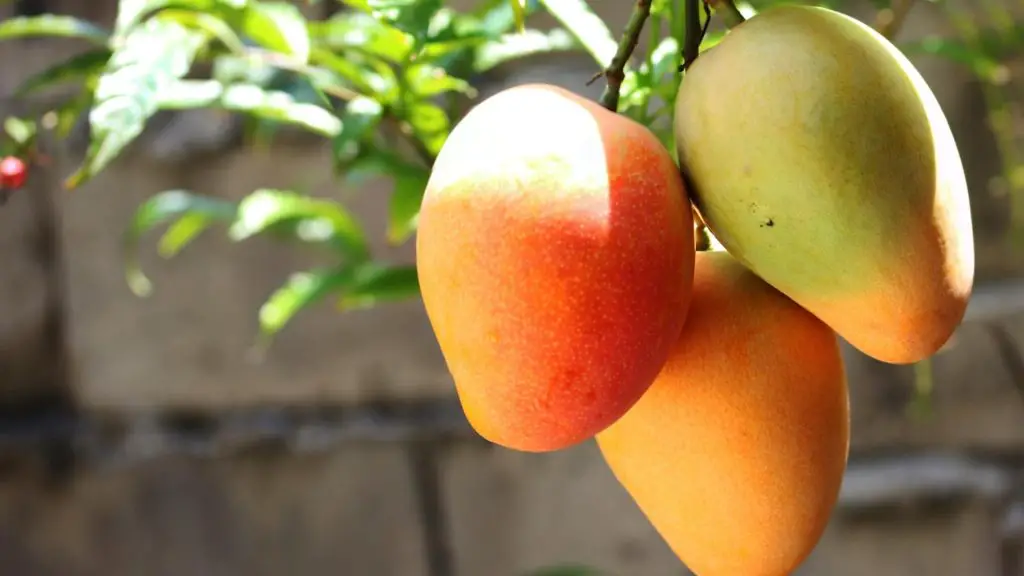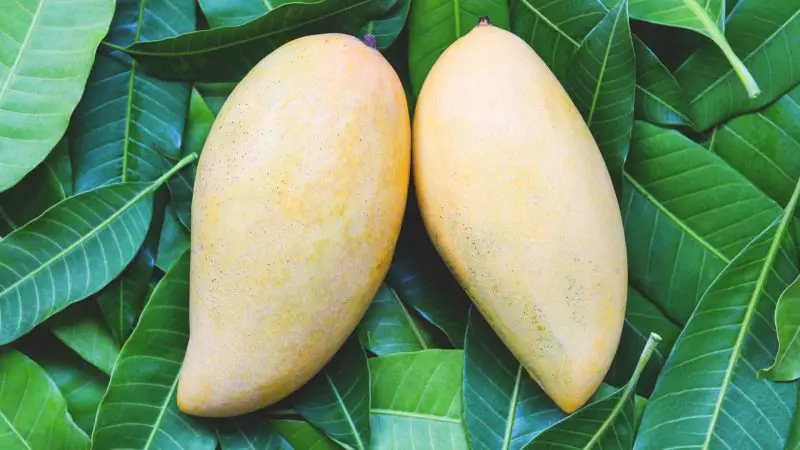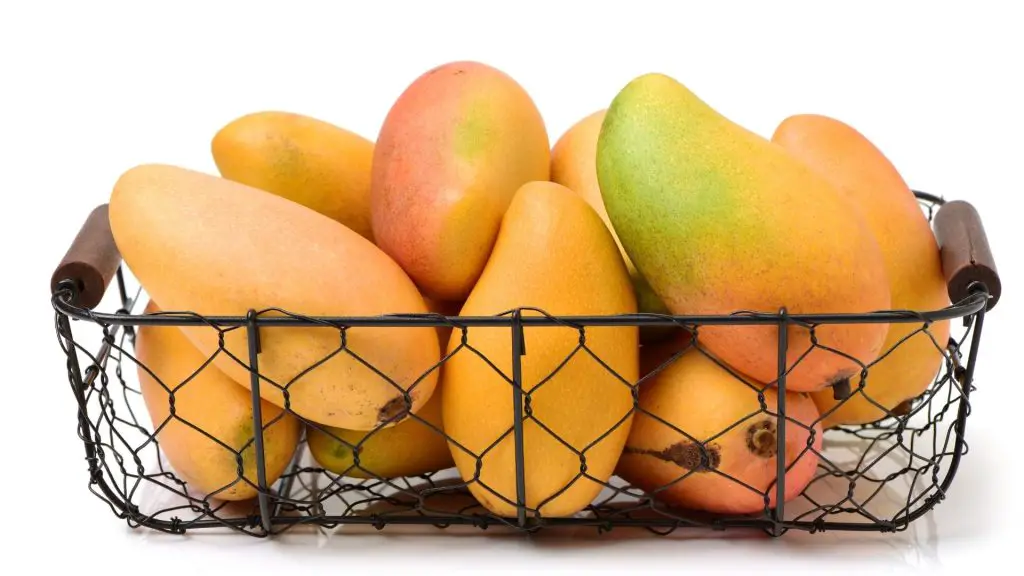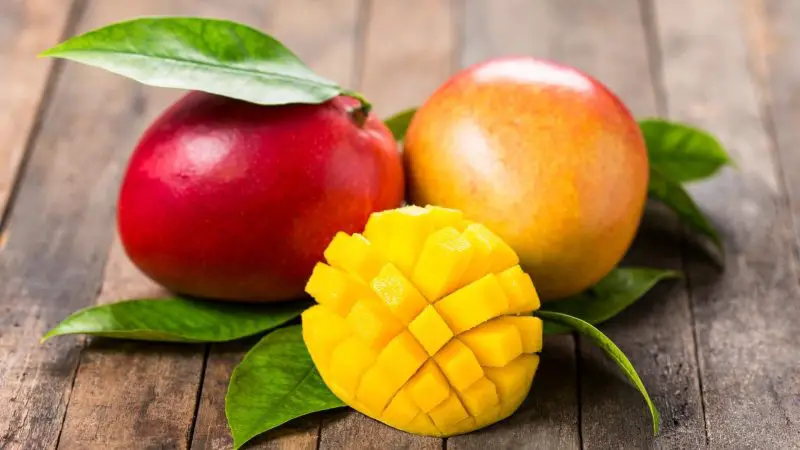It is almost summertime. Best represents summertime is a nice, delicious, colorful fruits like mango. Sometimes we love to eat mango so much, there is barely any left for our pets. But, is mango good for guinea pigs, or more precisely its skin in this case? Let’s find out.
Can guinea pigs eat mango skin? Guinea pigs cannot eat mango skin. The skin of the mango is generally rough and strong in texture. So, this may be a choking hazard for the guinea pig if it doesn’t chew the skin properly.
Mango is a tasty tropical fruit. Everyone loves it, as dessert, in recipes, fruit salad, and as decoration on sundaes. Our guinea pigs love mango as well as we do! But, the skin of the mango is not so safe for the guinea pigs.
Every owner must research every food before he feeds the guinea pig with it. Below, we will discuss mango skin and if it has any benefits or other risks for the cavy, so keep on reading!
Table of Content
Are Mango Skin Good for Guinea Pigs? | Health Benefits

The mango skin may be packed with almost the same nutrients as the flesh of the mango itself, but these are not worth risking the health and life of your guinea pig.
The risk of indigestion comes from the rough texture and fibrous skin, and there is also the risk of pesticides entering the system.
Also, the most dangerous risk is choking! Your guinea pig may not chew the mango skin properly due to the roughness of the texture and it won’t be able to swallow it.
This is a major risk and a choking hazard. Remember, all these things outweigh the benefits of nutrients located in the skin.
Related: Can Guinea Pigs Eat Mango? (Benefits, Risks, Serving Size & More)
Nutrition Facts of Mango Skin

Nutrition facts for mango skin:
- Fiber – 78%. Fibers are essential for good digestion and regular bowel movements, and also healthy gut functions.
- Vitamin C – Without vitamin C, the health of cavies is endangered and under great risk! This vitamin keeps them perfectly healthy and without risk of scurvy.
- Vitamin A – The vitamin A is antioxidant that keeps almost all organs healthy. It banishes the free radicals that can cause many diseases and early aging.
- Vitamin E – The vitamin E keeps all skin and connective tissues healthy, and contributes to slower aging of skin and tissues. Also, it lowers the risk of some cancers, removes inflammation and keeps the immunity healthy too.
- Vitamin B6 – It reduces stress by increasing serotonin (happiness hormone), reduces anxiety, improves sleep and increases appetite.
- Calcium – Calcium is good for strong bones, but it’s needed only for guinea pigs that are in growth and development. Once the guinea pig is grown up, less calcium is better. Otherwise, urinary problems will arise.
- Magnesium – Magnesium is the mineral that keeps all muscle tissues pain-free and without soreness. This also includes the most important muscle of them all – the heart muscle. Other of its benefits is the prevention of diabetes and reducing anxiety.
- Copper – This nutrient is essential because it binds with iron to form red blood cells. With more red blood cells in the organism, the blood is healthier and less prone to anemia. This contributes to a healthy cardiovascular system by proper iron absorption.
- Polyphenols – These compounds prevent cardiovascular problems, weight issues, diabetes, neurodegenerative illnesses. They also have antioxidant benefits, too.
- Carotenoids – These compounds also act as antioxidants. The carotenoids are plant pigments (such as red, orange or yellow) and they can prevent many diseases such as cancers or eyesight problems.
- Triterpenes/triterpenoids – These plant compounds are very medicinal, and they can prevent the development of cancers (growth of tumor cells).
Is Mango Skin Bad for Guinea Pigs? | Possible Risks

- Bad digestion – Mango skin contains sugars and fiber. The sugar could cause painful digestion or bloating, or even loose stool. The same problems would arise with too much fiber, which is bloated belly and changes in the stool.
- Urinary problems – Mango skin might contain traces of the mineral calcium. If calcium is found in excess inside the organism of the guinea pig, it will cause urinary stones, painful urinating, and even blood in the stool.
- Allergic reaction – Mango skin could contain traces of the chemicals ‘urushiol’ which are a mix of many oily compounds that may cause allergic reactions and skin rashes. These compounds are seen in the poison oak and poison ivy as well.
- Toxicity and risk of diseases – Mango skin may contain some pesticide remains, even after washing the fruit well with water. The pesticides are used to fight off the insects and germs which can damage the fruit.
If such pesticides are ingested, there is a risk of reproductive system problems, and risk of some cancers. It can also arise problems in the endocrine system, the system for all glands and their production of hormones (metabolism, tissues, sexual functions, growth, sleep, mood, reproduction, and all others).
- Can be a choking hazard – The riper a fruit is, the softer the skin. But, in general the mango has a very rough skin, even almost unappetizing. It is kinda thick which makes it hard to chew on properly, and the taste is a bit bitter.
The texture is also fibrous, not just thick. So if the cavy doesn’t chew on this properly, it can’t be swallowed and this will be a choking risk for the poor guinea pig.
Related Question
How Can I Feed the Mango Flesh to the Guinea Pig if They Shouldn’t Eat the Skin?

Even though mango is very delicious and nutritious, you have the responsibility to prepare mango in the best way for your loved cavy.
Wash the mango well. Then, the pit must be removed. Try to peel off most of the skin because guinea pigs can eat mango flesh.
Quick Facts on Mango Skin
- The first mangos were grown in India, perhaps 5,000 years ago.
- Some legends claim that Buddha did his meditations under Mango trees.
- Mango is not only yellow. It comes in other colors too, such as green, orange, and red.
- A not fully ripe mango has more vitamin C, and ripe mango has more vitamin A.
- In India, mango represents a sign of sacred love and they believe it has the power of granting wishes.
- The oldest mango tree is located in East Khandesh, and it’s 300 years old.
- At weddings, mango leaves can be used to bring good luck to the couple.
We have also made a full list of foods that guinea pigs can and can’t eat (150+ Types of Foods). Be sure to also check our recommended products page for everything you will ever need to assure a happy life for your guinea pigs. Hope this information was helpful and you have found the answer you were looking for.
List of Sources
Nutrient Requirements of Laboratory Animals: Fourth Revised Edition
The Effects of Diet on Anatomy, Physiology and Health in the Guinea Pig
Chemical Composition of Mango (Mangifera indica L.) Fruit: Nutritional and Phytochemical Compounds
